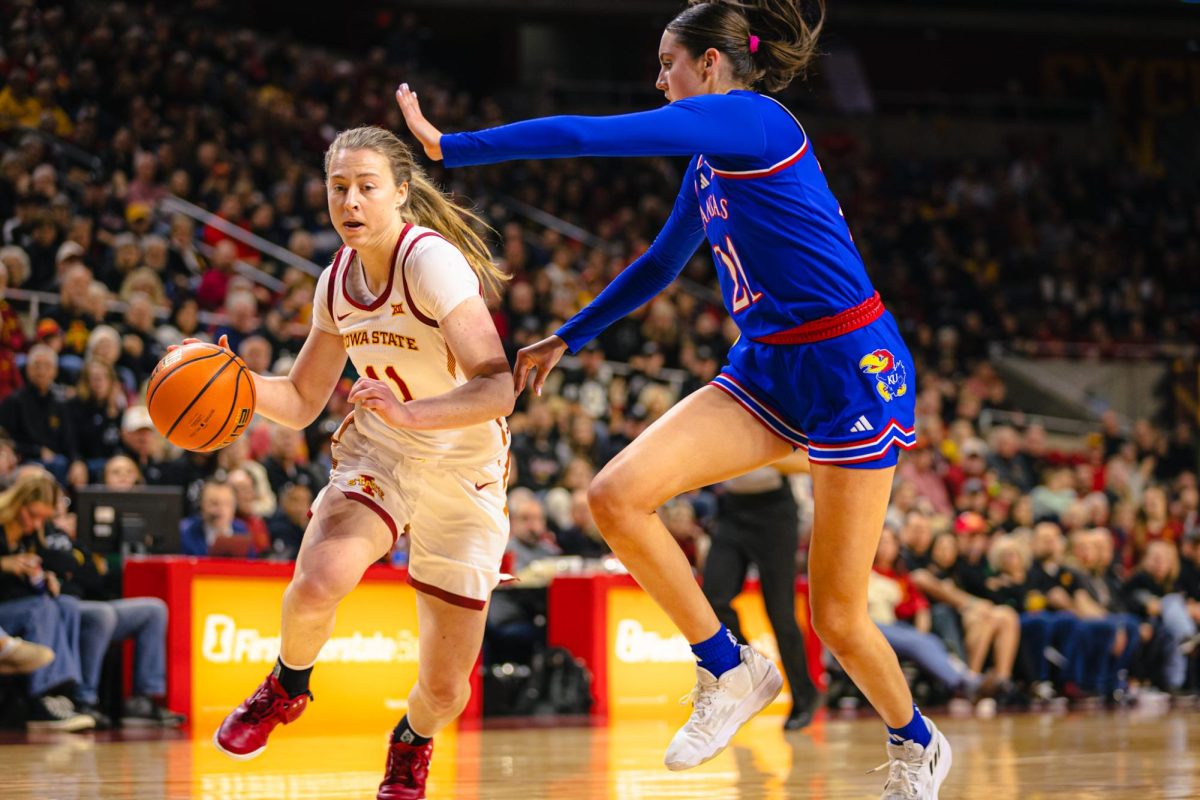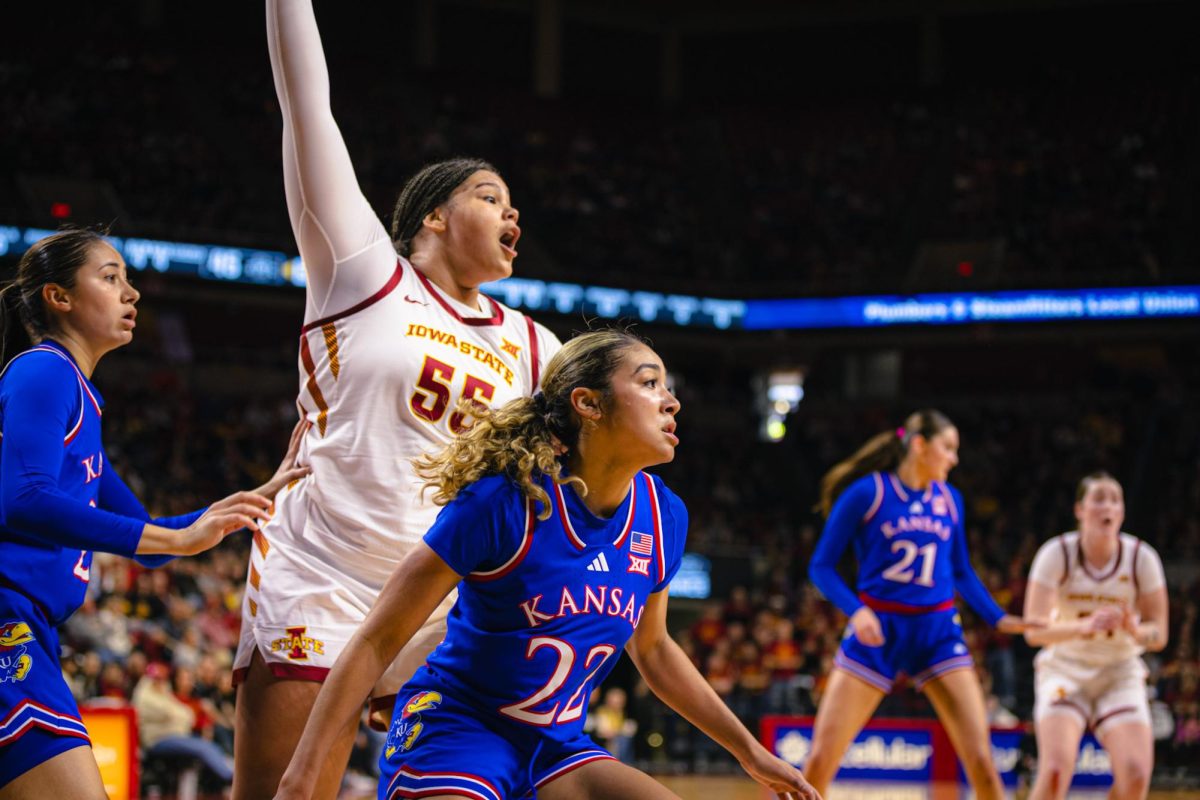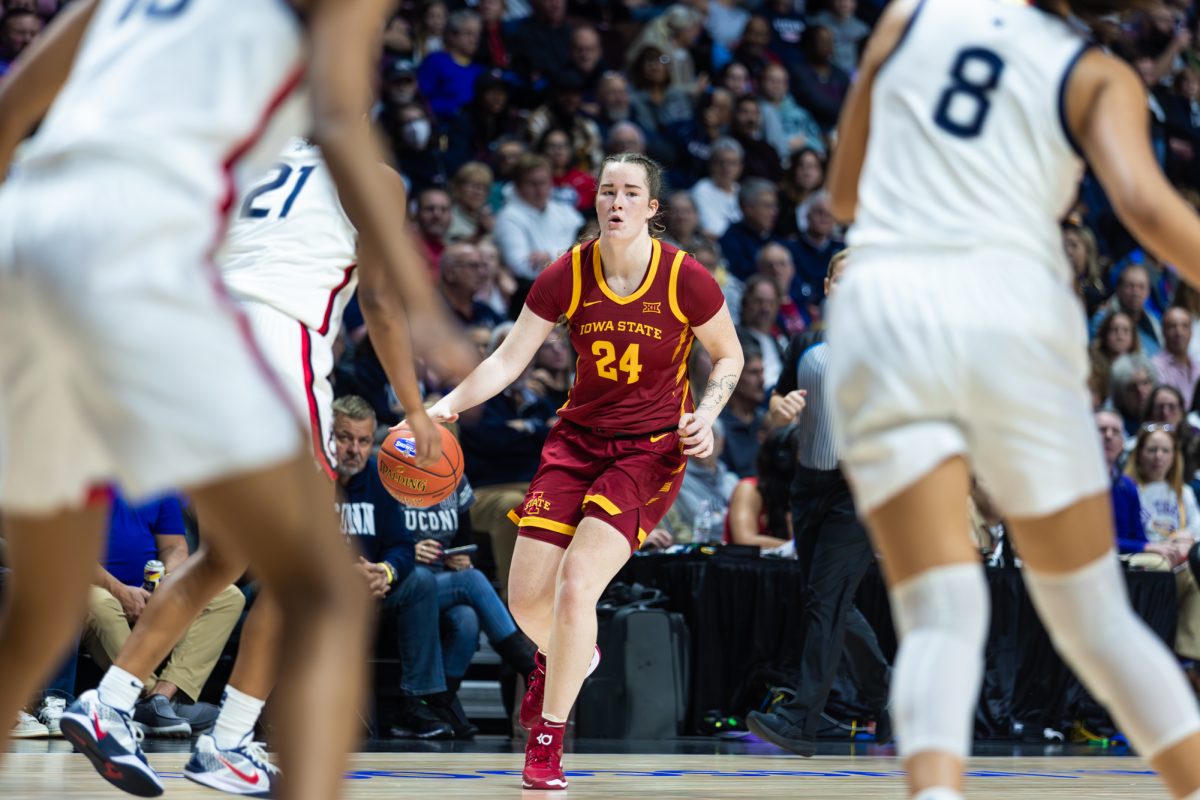Gallery 319
June 24, 2009
The arts are alive and well in Cyclone country. At a certain Ames gallery, one may find art created by his or her neighbor, lab technician, or professor.
Gallery 319, 310 Main St., displays the work of about 45 local artists.
“Most of them are from Ames and the surrounding communities,” said Mike Miller, the gallery’s owner.
Several contributing artists have ISU connections, including Lee Anne Willson, university professor of physics and astronomy, who creates “quilt-like” origami.
The creation process for Willson’s work starts with three to four-inch squares of paper — anywhere from 60 to several hundred pieces — that she folds in intricate patterns.
“It takes close to 10 minutes per piece of paper,” Willson said.
Once all the sheets are folded, layout begins.
“It’s a little bit like a jigsaw puzzle at that point,” Willson said.
The result is a pattern of shapes, straight edges and colors that have caught the attention of art enthusiasts throughout the world.
Although Willson’s work has diffused — pieces travel from as far away as Texas, Seattle and even Hong Kong — if you want to view or purchase some of her work, Gallery 319 is the only place to go.
Miller said he never envisioned himself as an art gallery owner.
He graduated from Iowa State in 1984 with a degree in graphic design, but Miller said, “as we are now… 1984 was not a good time to go find a job.”
He took a job as a custom framer and, through his work, began to become integrated into the Ames art community.
This led him to his next professional role as the director of fundraising for Ames’ Octagon Center for the Arts, through which he met more local artists.
When he and his wife Marla bought Gallery 319 from its previous owner in 2004, he was in a position to transform the gallery into a local artist showcase.
“It’s been a great thing for the art community in Ames,” Willson said.
She said having art placed in a gallery is a legitimizing feeling as an artist. She also said that it’s encouraging to know that others appreciate work that is often created experimentally.
For Willson, the explorations are often a creative outlet for her scientific work.
One piece in particular, titled “Planet in the Wind of a Dying Star,” is a “direct translation,” Willson said, of the images of her research she sees in her mind.
“My research has to do with what happens to stars, like the sun, when they get very old,” Willson said. “The image has the red giant, it has the blue shock waves and it has the planet that’s interacting with the wind.”
While initially the two subjects of art and science may not seem compatible, Willson translates her scientific studies into art.
“I actually find that there’s more similarities than most people think in the problem solving that goes into artwork and the problem solving that goes into science,” Willson said.
For artists wondering how to showcase their work in the collection at Gallery 319, Miller suggests making an appointment.
“I like to see eight to 12 pieces of what you consider your best work,” Miller said.
He said his decisions are based on several things, such as the artist’s goals and ability to produce consistently.
Experience is not required. The gallery shows many newcomers, and Miller helps new artists with valuing their work.
“I help artists set the prices,” Miller said, suggesting that artists take into account their direct material costs and the number of hours spent on a piece when pricing.
However, not every factor is so easily measurable. Miller said he suggests artists consider what they feel their artistic merit is monetarily worth.
“That is the hardest thing they have to decide on,” Miller said.
The business
Although Miller is passionate about art and local artists, art isn’t a viable business by itself.
“Having the artwork out there is not a money maker. I have it out there because I enjoy it,” Miller said.
So when Miller purchased Gallery 319, he also got back into custom framing. The two pieces of the business are almost symbiotic in nature.
“I can’t have the art without the framing, and I learned to do framing first, which helped me appreciate art,” Miller said.
Miller also said that he considers framing an art all its own, and he’s framed everything from cookies to golf clubs.
The business has gotten a high-tech upgrade since he got his start in 1984.
Gallery 319 also has a system of projectors and cameras that lets customers preview what their final product will look like before any work is done. Miller said he also uses computers to cut the matting used for the frame, a process he used to do by hand.





